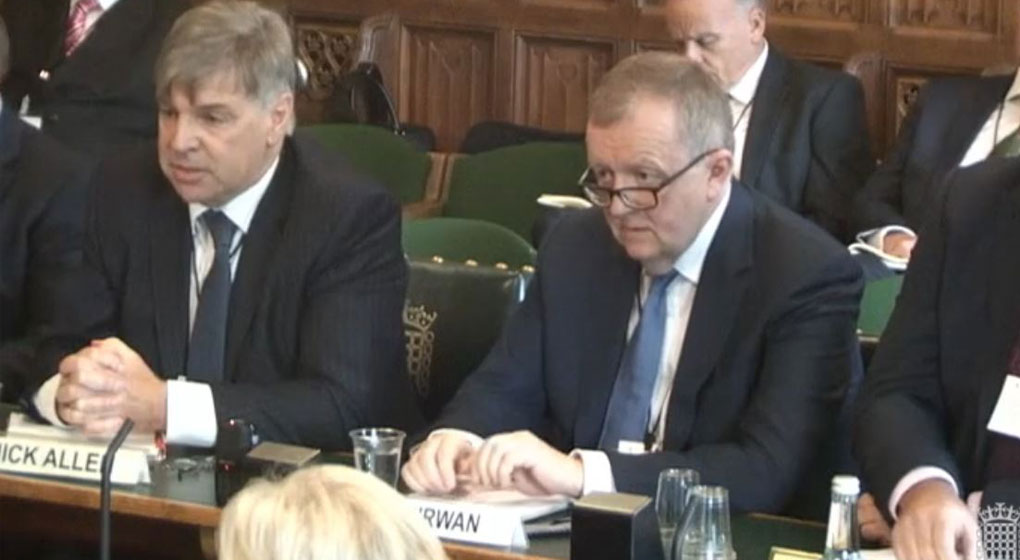EFRA Committee challenges industry on beef prices
Last week’s EFRA Committee meeting provided a good opportunity to interrogate why the farm gate beef price in the UK is currently so low. Here’s an overview of what they uncovered.
Supply and demand
Like any other commodity, cattle prices are primarily driven by supply and demand. Tom Kirwan of ABP revealed some interesting figures to illustrate what’s been going on in 2019. Along with nearly a 2% increase in production (prompting more competitive cattle sales), there’s been a substantial change in consumer behaviour during the summer resulting in a 13% drop in demand for beef steaks. Consumers have been switching in unprecedented numbers to fish (mainly salmon).
There’s no one reason for this change in buying habits; it could be a mixture of recent bad press surrounding meat, weather during the BBQ season or consumer confidence that has constrained sales. What we do know is that the customer is king and prices and sales are ultimately driven by their demand.
Mr Kirwan also pointed out that, according to AHDB figures, for the last 4-5 years, British processors have paid an average of 27p per kilo more than their EU counterparts.
In order to get a whole-of-market picture, we need to look at what happens to the rest of the carcase, much of which is exported or sold into other markets.
There was a suggestion from Stuart Roberts, Vice President of the National Farmers Union that, because the UK has some of the wealthiest consumers and most sophisticated retailers, we should be pushing that differential up to 50p per kilo will have sounded very appealing to his farmer members but somewhat wishful thinking given the laws of market and pricing dynamics.
Beef pricing dissected
One of the big questions from the committee was why retail beef prices appeared not to have fallen in line with farm gate cattle prices.
Tom Kirwan explained that there are considerable time delays due to some beef being hung for as much as 28 days, some going straight into the store to come out later and some being frozen for export markets.
Nick Allen, CEO of the British Meat Processors Association shed more light on how the pricing mechanism works in the beef supply chain.
Part of the reason is that the big retailers have, for the past few years been operating a system of ‘everyday low prices’. This means that they have absorbed high prices in some years in order to keep prices low. When farmgate prices fall, the balance is re-set but it doesn’t automatically trigger a corresponding drop in the price of meat on the shelves.
Retailers don’t buy the whole animal, they only buy selected cuts. Indeed the retail price of beef accounts for less than half of the overall market for beef products. If we simply look at the farmgate price vs the UK retail price we’re not getting the full picture. That comparison is too simplistic.
In order to get a whole-of-market picture, we need to look at what happens to the rest of the carcase, much of which is exported or sold into other markets. Prices across the EU have dropped in unison over the last year which means money has disappeared out of the supply chain. Essentially, more product has been exported but at a considerably lower value. As an example, the price of hides is achieving £20 less this year than previously. Hides account for a significant proportion of the value of the by-products market.
Here in the UK, while the ‘buy British’ ethos is strong amongst retailers and shoppers, there is a lot less loyalty among out-of-home customers in the food service sector which also has an effect.
Nick Allen also gave a specific example of how the current beef pricing structure is not as simple as it first appears. With the recent drop in steak sales, more of the animal has had to be sold as mince. Indeed, mince accounts for 55% of meat sold in the UK. It also attracts a lower price than steak so this has lowered the overall value of the animal.
To add some context to this, processors are buying bone-in meat at about £3.40 per kilo which they must then debone, process, pack and send to the retailer pushing the cost up to around £5.00 per kilo. Mince is currently being sold in the shops for an average of £4.00 per kilo. Despite lower farm gate prices, this price disparity is a reality in the industry.
This EFRA Committee meeting covered a number of other areas including what the response should be to changing consumer attitudes towards meat which we’ll cover in another article. For now, we hope that the evidence provided by Nick Allen and Tom Kirwan has gone some way to explaining to the MPs present the complex interplay of factors up and down the supply chain that go to make up the beef price.
You can watch the full video here.






